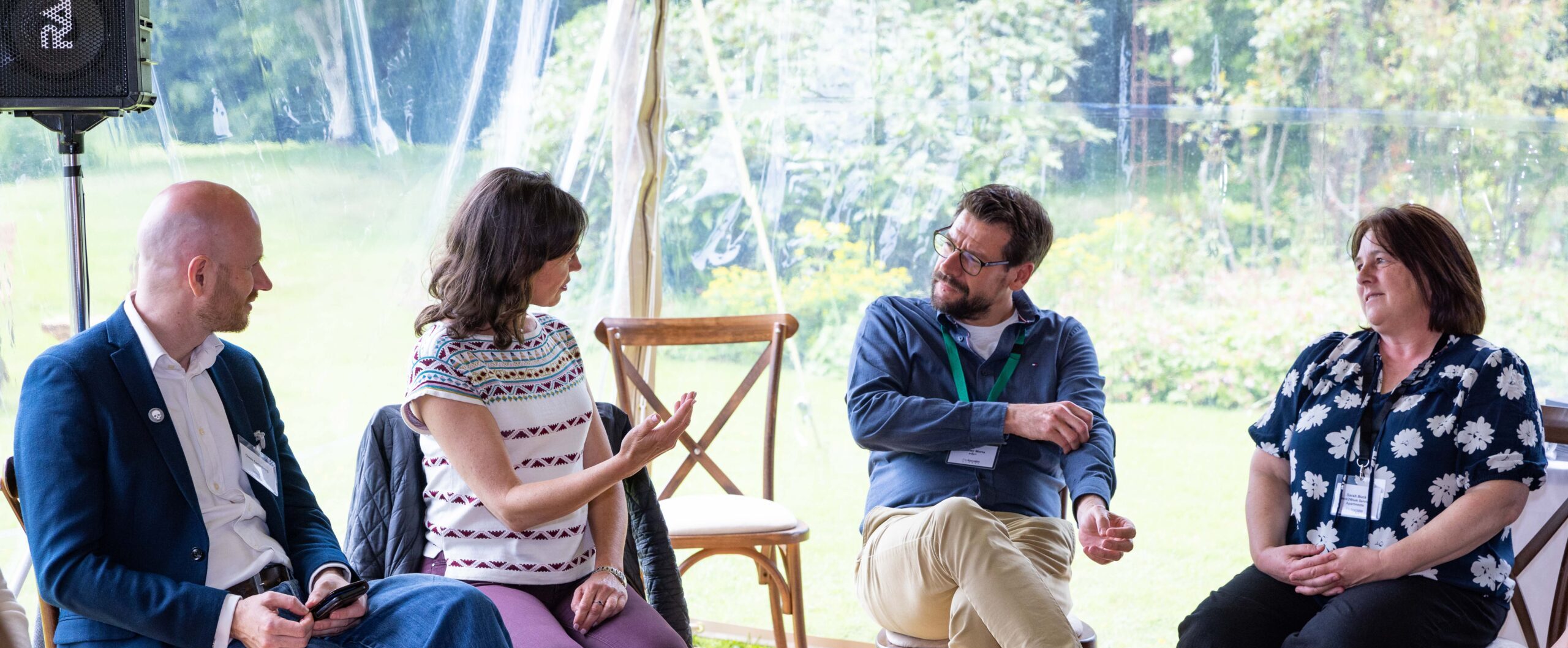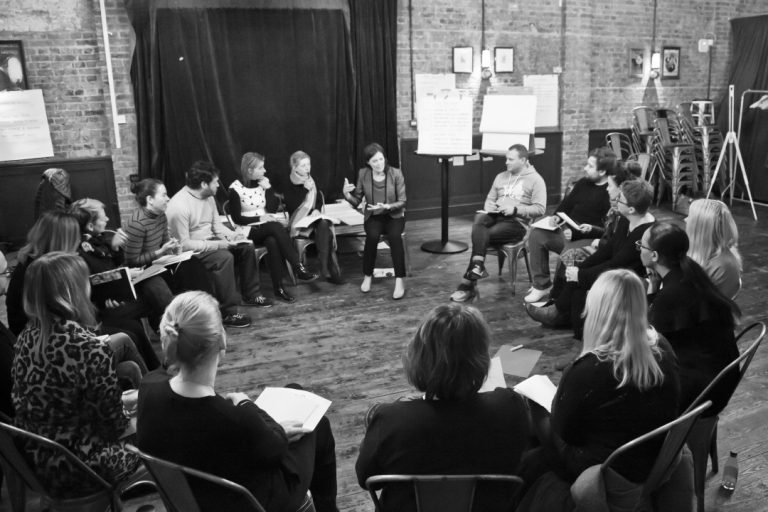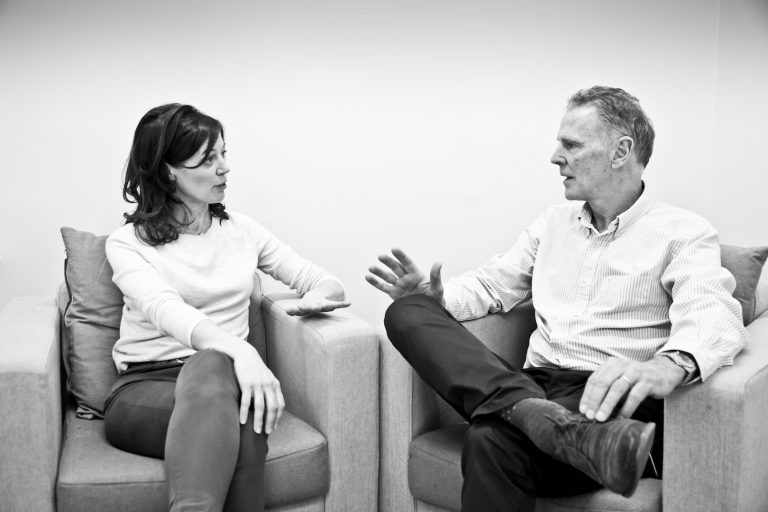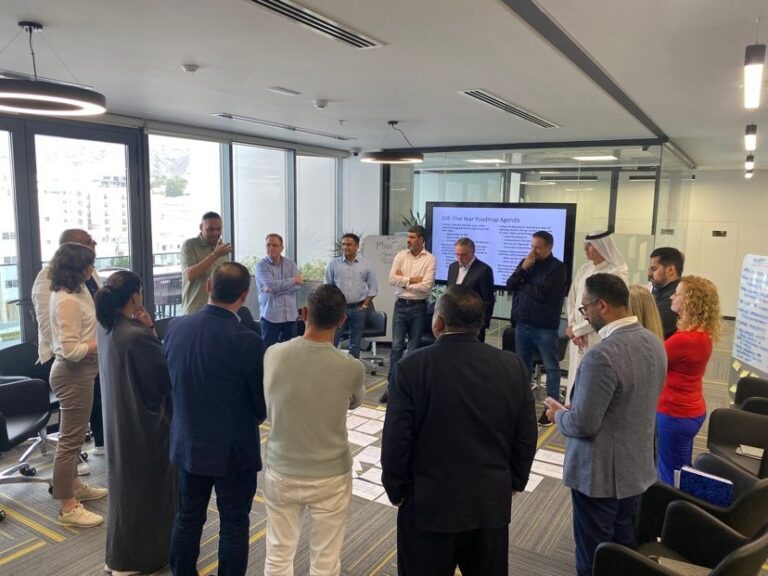With the UK general election only a week away, our news streams and TV screens have been full of fractious discussions and accusation slinging. “Politican’s staff room squabbles” is how Rachel Cooke in The New Statesman summed up the recent TV election debates. After watching Rishi Sunak and Kier Starmer go head to head, she concluded that the productions are so embarrassing and boring they are “better for the glutes than hours of Pilates.” Ouch.
These TV debates seem to be more about entertainment than current affairs. What if there was real dialogue instead? What if participating and learning was more important to a leader than beating down their opponent? What if politicans listened for a deeper truth that arose out of different perspectives? How different life in our public square would be.
This is after all the promise of an authentic dialogue: new insights, shared understanding and moving forward together. These benefits only emerge, however, if we can turn the tension of disagreement into the triumph of having a constructive conversation. It is possible to move beyond point scoring, puerile undermining and pointless back-and-forth with some proven techniques. I cover three tools below for navigating conflict toward positive outcomes.
1. Notice when things go tense
“When everyone is thinking alike then someone isn’t thinking” (US General George Patton)
Disagreement is a natural part of day-to-day life whether in families, the office or the debating chamber of the Houses of Parliament. What makes a conflict different to a disagreement is the felt sense of tension. Take a look at these dictionary definitions of ‘conflict’:
‘An active disagreement between people with opposing opinions or principles’ (Cambridge English Dictionary)
‘Friction or opposition resulting from actual or perceived differences or incompatibilities’ (BusinessDictionary.com)
It’s understandable that people see things differently. One team member thinks that working from home two days a week increases productivity. Their manager thinks the whole team needs to be in the office five days a week for maximum engagement. Conflict arises when the team member and their boss see difference as a problem and are unable to resolve it. Navigating conflict is about learning to handle difference and tensions productively.
A first step to managing conflict more effectively is to pay attention when discomfort arises. If we fail to notice that the atmosphere has suddenly stiffened, we risk sweeping the real issues that need discussing under the carpet. At a recent webinar that I co-led with Dr Claus Springborg, I asked participants what they noticed when tension arose in themselves or in the meeting room, whether in person or on video. Here are some of the responses:
- A sense of wariness in the air
- Muscles tense up (especially facial)
- The tone of voice starts to rise
- My jaw goes tight
- People don’t put their cameras on
- My voice constricts
- There’s a reduction of “space” in the room
- People go silent and emit a passive resistance to ideas
- A sense of people feeling anxious and unsafe
- The conversation goes in circles…
- Not discussing ideas but judging people
- There’s a lack of acknowledgement of others’ perspectives
- The loudest voice dominates
- Railroading others
- Point scoring rather than resolving the actual problem
- Accusatory language (“You’ve clearly lost the plot” or “Duh! Hello!”)
- “I am right, you are wrong” mindset
It’s only when we notice an uncomfortable moment has arisen that we can intervene productively. Effective dialogue often pivots on someone asking a question rather than asserting another opinion. Asking “What’s the real issue here?”, “Help me to understand what you meant by…” or “What do you need right now?” all help to keep conflict at bay and the door to dialogue open.
2. Make time to listen
“In true dialogue, both parties are willing to change” (Reinhard Stelter)
Reinhard Stelter, Professor Sport & Coaching Psychology at University of Copenhagen in Denmark, was a recent guest on my new podcast, Now We’re Talking. Stelter’s groundbreaking book, ‘The Art of Dialogue in Coaching’, highlights how being willing to change one’s mind is at the heart of a transformative conversation. Without this orientation, dialogue either derails or doesn’t happen.
Cultivating receptivity to another person’s point of view means making time to listen to them (rather than getting ratty as Sunak and Starmer appeared to do in their debate.) In this age of ‘whizzing about’ (as Stelter puts it) there is scant time to talk. We need to make the conscious choice to slow down, tune in and listen to another person. As Winston Churchill said, “Courage is what it takes to stand up and speak; courage is also what it means to sit down and listen.”
In our ‘burnout society’ (a phrase coined by the German philosopher Byung-Chul Han) there is a relentless demand for productivity, efficiency and success, leading to an epidemic of exhaustion. Some managers constantly push themselves (and others) to meet ever-increasing demands. The erosion of community ties, the commodification of human relationships, the rise of social media and the constant pursuit of individual achievement places an emphasis on performance-driven metrics, undermining the well-being and vitality of individuals and society as a whole.
Taking time to listen, particularly to someone who’s opposing you, is a small step towards restoring wellbeing. Even if it’s only for ten minutes, deeper listening is a tonic for both parties. Listening helps people to take a broader perspective by learning something about how the world is for another person. It’s a sign of respect and sends a message that you assume that there’s value in the other person’s point of view (even when it’s presented as challenging to accept.) Asking questions and being curious improves a conversation and your relationship too.
3. Have a ‘cross-model conversation’
“Nobody does anything wrong given their model of the world” (Neale Donald Walsch)
Reframing a conflict as the need to have a ‘cross-model conversation’ is a potent way to keep a conversation constructive. David Kantor in his book Reading the Room advocates turning a turf war or interpersonal conflict into a ‘model clash.’ People are less likely to be reactive and more likely to be responsive when they’re ‘fighting’ over ‘models’ rather than making it personal.
Instead of seeing your ‘opponent’ as someone whom you need to ‘beat down’ with your point of view, see them as a ‘thinking partner’ who brings helpful ‘constraint’ to your model. They may even reveal your blind spots and make you think of a new angle. Together you might arrive at a fresh solution that you’d never have arrived at by thinking alone or staying stuck in the groove of your own thinking.
One team I worked with had fallen out over the question of working from home vs. working at the office. Team members favoured remote working whilst managers wanted everyone to work at least three days in person. The issue had become highly polarized and the sense of discontent had started to impact performance with missed targets and overrun deadlines.
To help them discuss the issue I encouraged each ‘side’ to get clear about their ‘model’ of effective team working. Team members spoke about their need for autonomy in order to perform well (not some vague HR idea about ‘teamwork’ trumping all other considerations.) They pointed to the lack of desks and lockers and highlighted how they often ended up doing video calls in the corridors when they could have done them more effectively from home. The managers spoke about better collaboration occurring from in-person working, the need to build a performance culture and the importance of on-boarding new recruits (whilst acknowledging that many of the team members had been recruited during the pandemic and had never experienced this themselves.)
Once they’d done this thinking in two separate groups, we had a whole group dialogue that involved each ‘side’ laying out their thinking starting with “In our model…” or “In our way of thinking…”
This ‘cross-model conversation’ turned a conflicted situation into an insightful conversation. The atmosphere shifted from tense to thoughtful as people stopped talking over one another and started to listen to one another instead, knowing that their turn to talk would come. The team came to see that a ‘one size fits all’ approach wasn’t necessary. They agreed that they’d continue to discuss the issue in sub-teams to explore what a workable solution could be for that sub-team.
Closing comment
Disagreement is inevitable, but conflict isn’t. Acknowledging tension in order to navigate it, taking time to listen and having a ‘cross model conversation’ all move a challenging situation forward. When a leader is able to successfully turn a fight into a discussion, an argument into a conversation and an oppositional debate into an authentic dialogue, it not only resolves a conflict but means there’s less jaw-clenching too.






